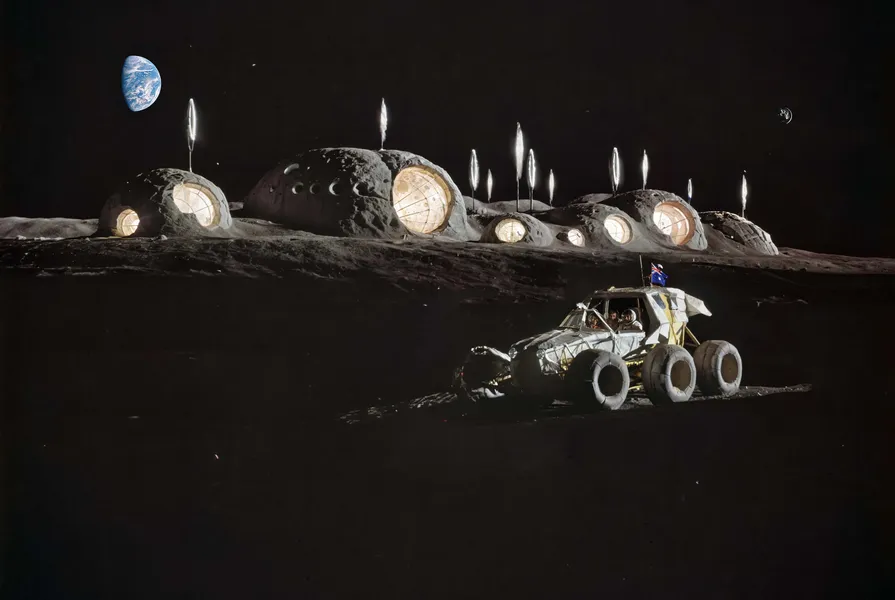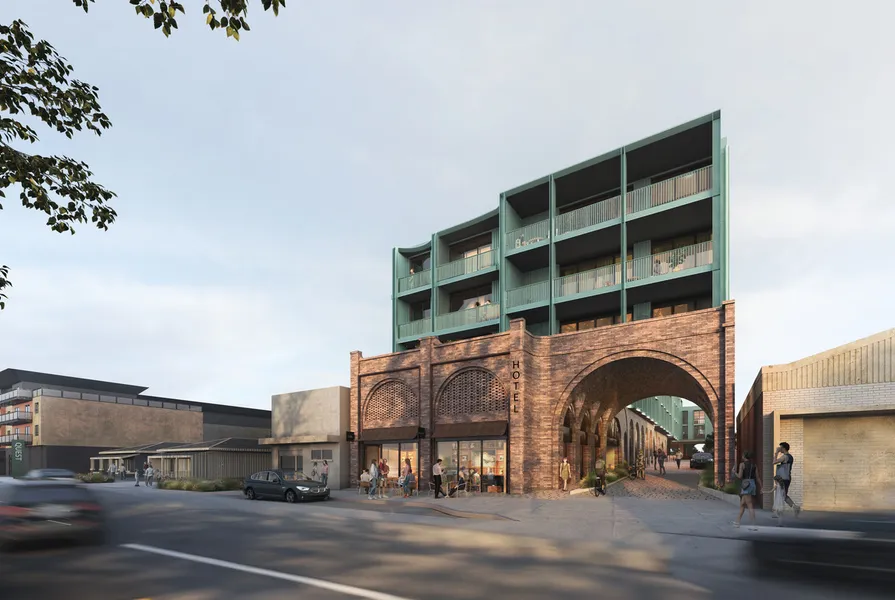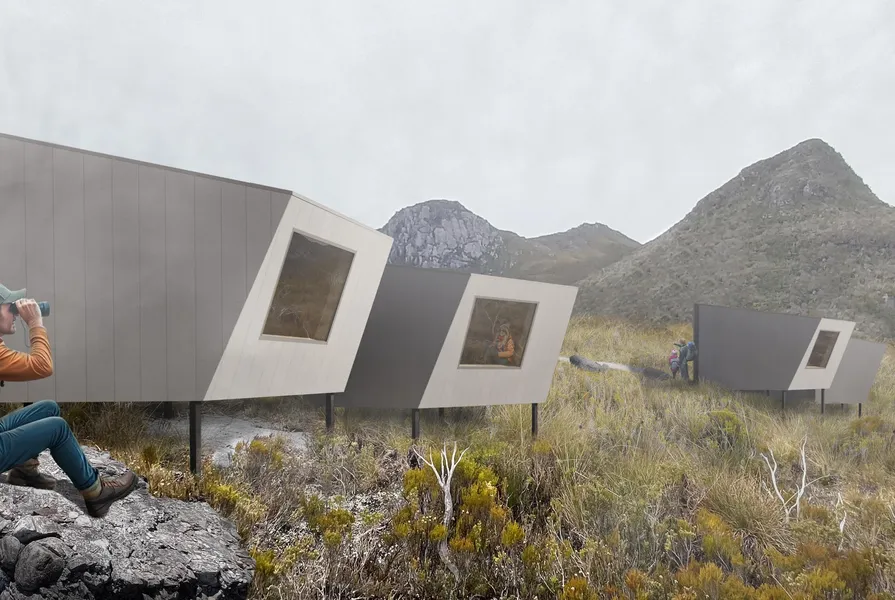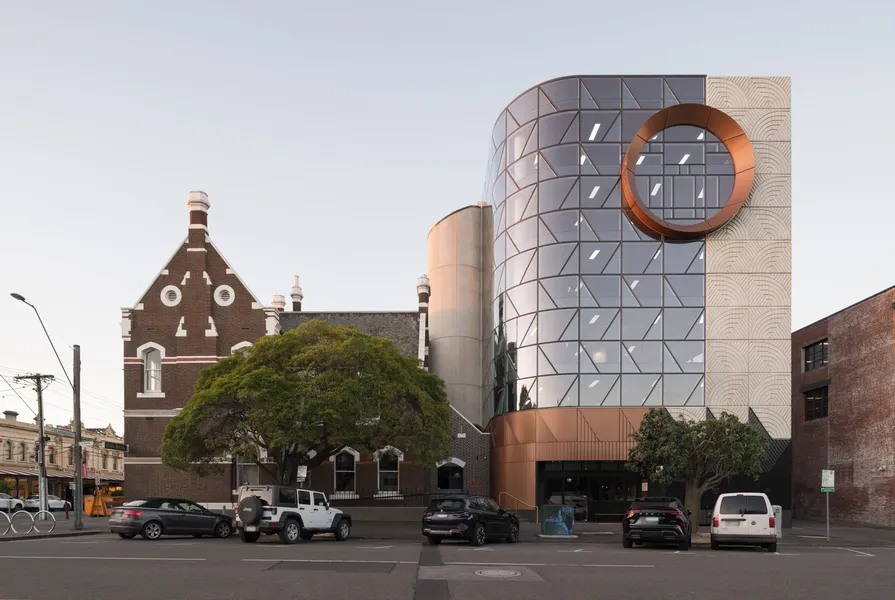- by architectureau
- 12 Mar 2025
Winning designs speculate on future lunar habitats
The designs of the Australian Space Architecture Challenge envision possible architectures for human habitation on the moon in 2069.
- by architectureau
- 09 Oct 2024
- in architects

The University of Adelaide recently announced the winners of its inaugural Australian Space Architecture Challenge, organised by the Andy Thomas Centre for Space Resources (ATCSR). Open nationally to students and graduates across STEM and creative disciplines, the competition sought to gather intelligence across a wide range of fields and showcase Australia's capacity to contribute to deep space human habitation.
Dr Amit Srivastava, head of the Lunar Architecture Research Group at the ATCSR, noted, "The Australian Space Architecture Challenge aligns with the goals of Australian Civil Space Strategy and the Moon to Mars initiative to advance Australia's position in the global space economy."
The brief tasked participants with designing a lunar habitat for the year 2069 - exactly 100 years since humans first set foot on the moon's surface. Situated on a ridge between Shackleton and De Gerlache craters, design proposals were required to cater to a community of up to 30 people, "showcasing the innovative and sustainable evolution of lunar living and the preparation for the upcoming Mars expeditions."
Citing cinematic precedents - including Tatooine in Star Wars and Arrikis in Dune - as possible inspiration, the brief encouraged participants to push the boundaries of reality. The jury, comprising architects, engineers psychologists and artists, awarded projects that demonstrated originality and inventive thinking alongside high technical feasibility and a sophisticated understanding of the psychological and social impacts of the human experience in space.
The winning design, titled Happy Homesick, was submitted by a student team from the University of Western Australia comprising Eric Luan, Claire Basso, Robert Cameron and JD Otto. The concept dispels visions of controlled, earth-like shelters typically found in pop culture, focusing instead on cultivating an environment reminiscent of home, where everyday activities, like hobbies and birthdays, coexist alongside space missions and scientific experiments.
"Our concept investigates what a truly lunar or Martian architecture might look like, and whether a human born in space could feel at home there," said the team. "We wanted to focus on the everyday experience of future lunar settlers and cultivate a 'sense of place' that's unique to the lunar landscape."
Jury member Jonathon (Johnnie) Dady and artist in residence at the ATCSR commented, "This presentation offered a non-colonial approach to the brief, recognising the need for emotional ownership of place and realising that a sense of wellbeing, motivation, and scope for creativity are founded on an embodied sense of place. The planning is offered as an idiosyncratic human act."
Second place was awarded to Bowen Yang and Yichan Wei from the University of Queensland for their practical solution to the brief, titled Lunar Urbanism, and third place to Ihab Shamseldin and Samer El Sayary from the University of Technology Sydney for a terrarium vision on the Moon, titled Lunarium. Do Dang Quang Nguyen from the University of Adelaide was given an honourable mention for Alteon VII: a habitat for long-term living and research.
The winning design will be exhibited at the International Astronautical Congress in Milan, Italy, between 14-18 October 2024.
- by foxnews
- descember 09, 2016
Daring airport trend has travelers arriving at gate 15 minutes before takeoff
Flight passengers are participating in the new viral trend, "airport theory," with flyers arriving at their gates 15 minutes before their flights depart. A travel expert weighs in.
read more





